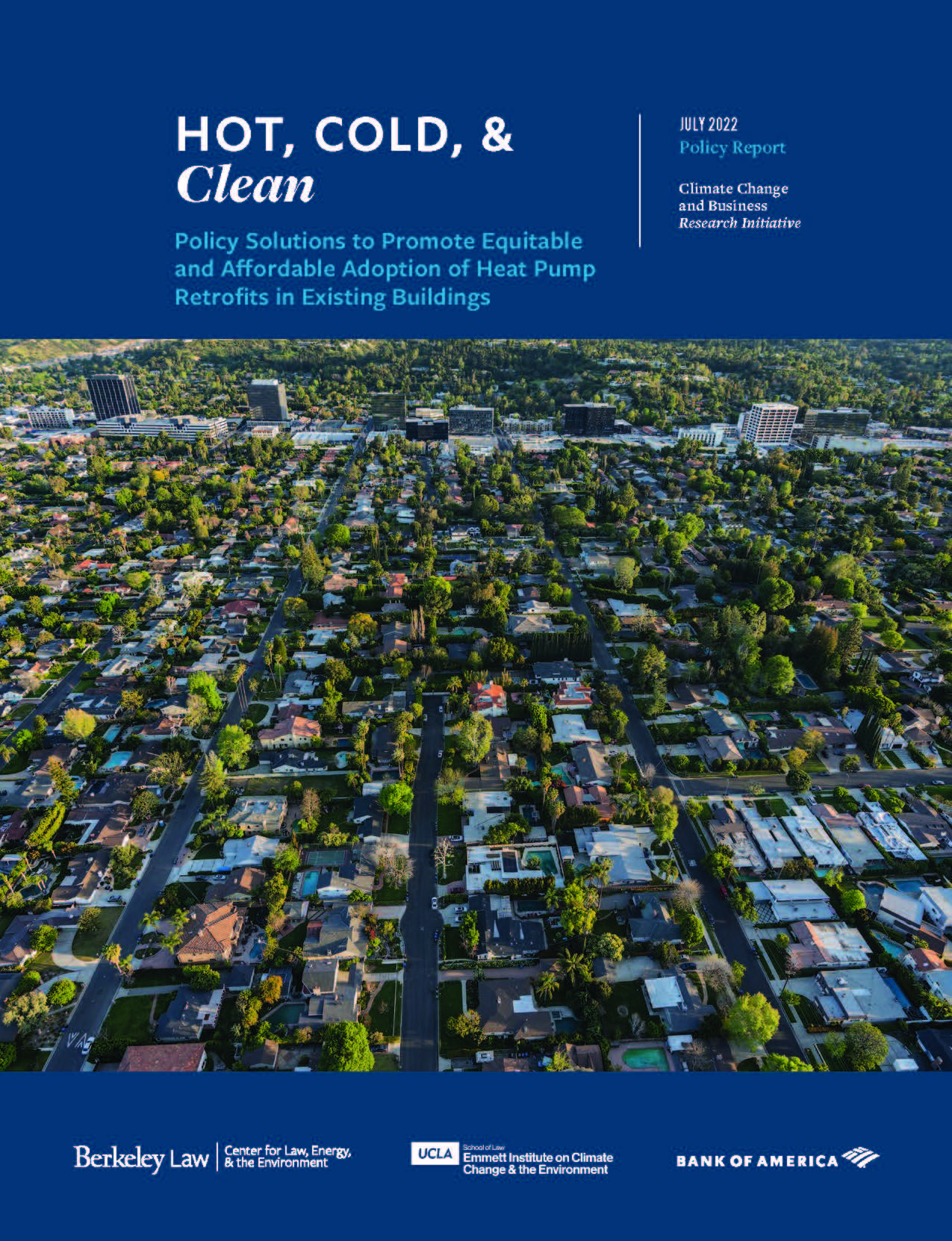July 2022
California’s residential and commercial building sector accounts for nearly a quarter of the state’s greenhouse gas emissions, with combustion of fuel for heating and cooling buildings generating more than 10 percent of state emissions. To achieve state goals of 40 percent greenhouse gas emission reduction (below 1990 levels) by 2030 and carbon neutrality by 2045, California must significantly reduce emissions from the built environment.
As the state moves toward all-electric buildings, replacing older gas-powered furnaces and air conditioning units with heat pumps can increase efficiency, comfort and resiliency. Heat pumps are a highly efficient technology that provides space and water heating and cooling, acting essentially as a two-way air conditioner, especially as warming temperatures will require more Californians to invest in air conditioning.
In 2022, the California Energy Commission set out an ambitious target of deploying 6 million heat pumps by 2030. With more than 14 million existing residential homes in the state, more than 75 percent of California’s existing buildings built before 1978, and heat pumps installed in only 6 percent of new construction, the state has a long way to go to meet its goals.
To address this challenge, CLEE and UCLA Law’s Emmett Institute on Climate Change and the Environment convened state, local, utility, housing and environmental leaders to develop priority solutions for promoting equitable and affordable adoption of heat pump retrofits in existing buildings.
As our new report, Hot, Cold & Clean, describes, point of purchase, installation, and financing challenges can stymie deployment. But, the report captures the progress in deploying heat pumps since our 2021 report Building toward Decarbonization and identifies additional policy solutions to overcome remaining barriers. State leaders could:
- Set a clear timeline for the long-term phaseout of natural gas space and water heaters to provide certainty for utilities, homeowners, tenants and investors.
- Set zero-emission air quality standards for space and water heaters to make heat pumps the baseline technology.
- Enhance funding for low-income homeowners and affordable housing providers to improve electrical infrastructure in order to meet increased energy demands, in a manner that prevents displacement and rent increases.
- Scale educational models and training programs for high road installer, maintenance, contractor and electrician positions to become heat pump champions.
To see the full list of proposed solutions, download the report here.
Watch the Webinar
Contact Ross Zelen, Ethan Elkind, Ted Lamm, or Katie Segal for more information.